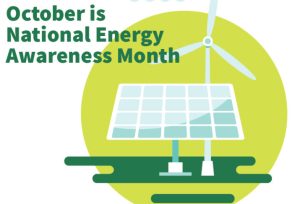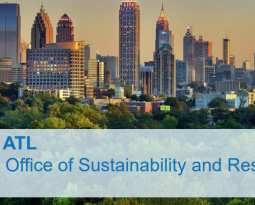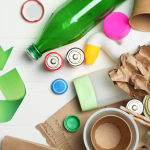Reduce Energy Consumption and Lower Your Bills
October is National Energy Awareness Month
Reduce. Recycle. Reuse.
 Follow us on our series ‘Let’s Talk Recycling.’ Recycling is a large part of a sustainable future and something we can all take part in as a community.
Follow us on our series ‘Let’s Talk Recycling.’ Recycling is a large part of a sustainable future and something we can all take part in as a community.
It’s that time of year again, time to celebrate National Energy Awareness! If this is another energy awareness anniversary for you or it’s your first-time hearing about it, October is the month a nation comes together to highlight the critical role energy resilience plays in mission readiness and driving action change.
How does reduce, recycle, and reuse contribute to saving energy? So many ways. Making materials from scratch is labor intensive. The natural resources that go into aluminum, plastic, and glass are expensive to extract, transport, and refine. With the average U.S. resident producing an average 4.5 pounds of trash a day, we are higher than the global average per resident at 1.6 pounds per day. Good news, recycling keeps about 87 million tons of solid waste from U.S. landfills a year. So, let’s raise some awareness and get the U.S. trash production reduced.
The more you recycle the more energy you save. Looking at each material individually is the key to energy efficiency.
- Paper is the most recycled material in the U.S. but also has some cross contamination challenges. Manufacturing recycled paper saves 60% of the energy that would be used making new paper from fresh pulp.
- Aluminum is the most cost-effective recyclable. You can make 20 recycled cans with the same energy it takes to make one non-recycled can.
- New plastic production accounts for 4% of the nation’s total annual energy consumption. With seven different types of plastics, knowing what can be recycled by checking what type it is will make your plastic recycling successful.
- Glass is 100% recyclable with 90% put into multistream collection getting recycled. Energy costs drop 2-3% for every 10 cullet’s (glass that is crushed and ready to be remelted) used in the manufacturing process.
If you are someone like me, who needs relatable comparisons, here are a few ways to scale the energy saved by recycling.
- If everyone in the U.S. just one light bulb with a more energy efficient variety, it would save $600 million in annual energy costs.
- Washing clothes in cold instead of hot water saves 90% of the energy used.
- Recycling cardboard only takes 75% of the energy required to make it brand new.
- Recycling one ton of plastic bottles saves the equivalent energy usage of a two-person household for one year.
- Recycling a stack of newspapers 3 feet high saves one tree.
- Recycling just one aluminum can save enough energy to power a television for 3 hours.
Conserving energy by reducing, recycling, and reusing saves you money while actively contributing to a sustainable future. Waste collection and disposal prices are rising, just look at your bill. The more trash that needs to be collected the higher the cost for collection. Buy less and recycle more. Your wallet will be thankful.
Follow us to learn about energy recycling.








